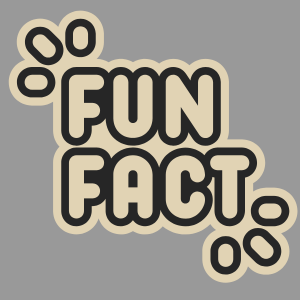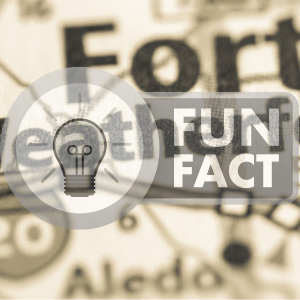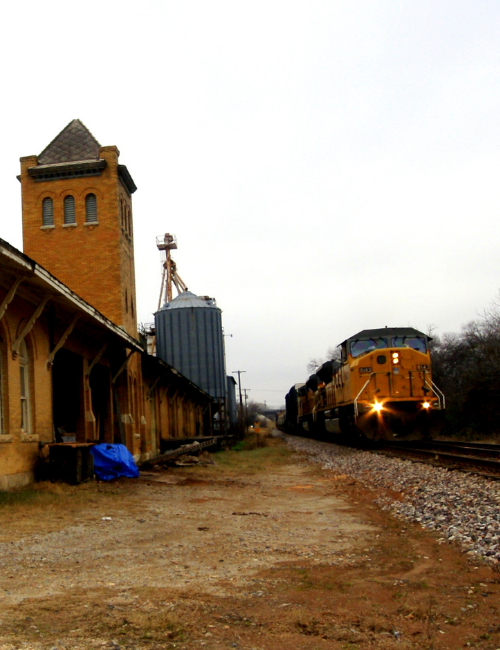
Fun Facts About Weatherford, TX: Revealed Surprising Weatherford History

Discover the fascinating history of Weatherford, Texas, which includes intriguing stories and surprising facts. Weatherford, situated in the heart of Parker County, boasts a rich history filled with colorful stories and historical events. Weatherford exudes a charming and appealing personality. It began as a small pioneer settlement and has evolved into a thriving modern city. Discover fascinating facts about Weatherford’s cultural heritage, pioneering spirit, and lasting legacy, all of which continue to shape and define the city today. This makes it unique in the state of Texas.
The Heart of Weatherford: A Charming Texan City
Weatherford, Texas, is a charming Texan city with a rich history and a vibrant community. Weatherford is at the entrance to West Texas, and its growth is closely tied to its unique cultural heritage. Due to its ties to the cowboy era and its celebration of Western traditions, the town is well worth visiting. People in Weatherford come together to celebrate a history that goes back decades. As we explore Weatherford’s unique cultural heritage and its ties to the cowboy era, you’ll see why this city is such a fascinating tapestry of stories that have been woven through time. For those looking to make a move or invest in this historic area, cash home buyers in Weatherford and surrounding Texas cities can make the process smooth and efficient.
Exploring Weatherford’s Unique Cultural Heritage
Weatherford, Texas, is renowned for its rich cultural heritage, which resonates with both residents and visitors alike. Weatherford’s heart beats with cultural vibrancy, shaped by a blend of historical events and contemporary traditions. Known as the “Peach Capital of Texas,” the city proudly hosts the annual Parker County Peach Festival, which honors its agricultural roots and strong community spirit. People gather here to enjoy local produce, artisans, and live music, reflecting Weatherford’s strong ties to the land and its residents. The festival is more than just an event; it exemplifies the community’s resilience in the face of economic and environmental challenges. Historical preservation is critical to Weatherford’s unique identity. Downtown buildings exude old-world charm while adapting to modern needs, symbolizing the city’s dedication to honoring its past while moving forward. The Doss Heritage and Culture Center adds to this story by showcasing artifacts and exhibitions that depict Weatherford’s evolution and the lives of those who shaped it.
Weatherford’s cultural heritage includes more than just festivals and historical sites. Weatherford’s residents, known for their warmth and Texas hospitality, make it a welcoming destination for both newcomers and tourists. Rodeos, farmers’ markets, and local gatherings foster a sense of belonging among residents, strengthening the ties that bind them together. These shared experiences and traditions ensure that Weatherford’s heritage thrives for future generations. Weatherford stands out as a Texas city where history, community, and culture seamlessly blend. Whether attending a local festival or exploring a historic site, visitors can experience the vibrancy of Weatherford’s cultural scene and gain a deep appreciation for its enduring legacy.
Weatherford’s Connection to the Cowboy Era
Weatherford, Texas, has a strong link to the cowboy era that is deeply ingrained in its history. Weatherford was a vital center in the late 1800s, a period that had a profound impact on the town’s culture. It is in a part of the country known for ranching and farming. During this time, cattle drives passed through the city, and cowboys played a crucial role in the area’s economy. This period marked the convergence of the cowboy legacy and Weatherford’s growth, making it a pivotal moment in Texas history. The cowboy era in Weatherford wasn’t just about cows and ranching; it was a time when the spirit of the West permeated the town, shaping its culture and identity. Weatherford’s rodeos honor this history by showing off the toughness and skills that were common in the early days of cowboys. There are rodeo events, such as bull riding, barrel racing, and steer wrestling, that pay tribute to the cowboy way of life. Every performance is more than just a sport; it’s a reminder of the past that keeps the cowboy spirit alive in the town’s mind.
Weatherford’s equestrian culture also keeps the cowboy era alive in people’s minds. People in the town keep this tradition alive by riding horses and going to events at local ranches. This helps the area maintain its reputation as a horse-friendly place. Weatherford’s love of horses reveals not only its past but also its ongoing respect for the traditions that have shaped it into who it is today. Community events and educational programs that teach new generations about the cowboy way of life demonstrate the dedication of people to preserving this culture. Weatherford boasts museums and historical sites that serve as living reminders of the cowboy era. They have displays and artifacts that tell the stories of the cowboys who came through town. This strong link to the cowboy era is a key part of Weatherford’s culture, showing a deep respect for the past and a desire to keep traditions alive. Weatherford remains an integral part of Texas history due to its cultural events, horseback riding, and efforts to preserve the past. It is full of realness and the true spirit of the West.
The Rich History of Weatherford’s County Courthouse
The Weatherford County Courthouse pays homage to the city’s rich historical and cultural heritage. As the focal point of Parker County, this iconic structure not only serves a practical purpose but also represents a rich history dating back to the late nineteenth century. The courthouse has seen countless events and transformations in Texas, serving as a symbol of continuity and stability for the Weatherford community. The architectural significance and enduring legacy of this landmark will be examined in the sections that follow, revealing its critical role in shaping Weatherford, Texas’s identity.
Architectural Significance and Legacy
The Weatherford County Courthouse, completed in 1886, is a fine example of the Second Empire style. It has a one-of-a-kind mansard roof and beautiful stone carvings. In the late 1800s, this style of architecture was used for many important public buildings in the United States. It showed a desire for greatness and power. Wesley Clark Dodson, a famous architect, designed the courthouse. Not only did it have these features, but it also made Weatherford the new center of government in Parker County. The building is architecturally significant due to its intricate details, such as its ornate cornices and massive clock tower, which showcase the craftsmanship of a bygone era. The courthouse’s symmetrical design and grand exterior, made of local limestone, show strength and permanence, which were essential to the first settlers of Weatherford, Texas. The courthouse features a large atrium and stained glass windows. These pictures showcase the classy and elegant nature of the building in Parker County. It was a place where people could go to court and conduct other civic activities, making it easier to enforce the law and host community events. It was an essential part of Weatherford’s social and cultural life.
The Weatherford County Courthouse appears excellent from the outside, but it also reflects the city’s transformation and growth over the years. The city has stayed strong and adaptable over the years, even as Texas has grown and changed. The community has been proud of its efforts to preserve its history for a long time, demonstrating the deep care Weatherford’s residents have for their local heritage. Due to the efforts made to maintain the courthouse in good condition and operational status, it remains an important landmark for the people of Parker County. The courthouse is a living symbol of Weatherford’s commitment to remembering its past while moving forward. It links the past, present, and future.
Another critical aspect of the courthouse’s legacy is its impact on education and culture. Over the years, it has inspired tourists, historians, and students to learn more about the history of Parker County and the city of Weatherford. School groups, history buffs, and tourists alike want to see this landmark because they wish to learn about the legal and cultural milestones it represents. The courthouse is also essential for events like the Parker County Peach Festival, which happens every year. It creates a beautiful backdrop that links the city’s rich history to the celebrations taking place right now. This long-lasting connection makes the courthouse an even more critical part of life in Weatherford. The Weatherford County Courthouse is not only beautiful and significant due to its architecture, but it is also a symbol of the city’s aspirations, achievements, and enduring spirit. It will continue to inspire people for years to come.
Parker County: The Landscape and Its People
Parker County, situated in the heart of Texas, boasts a breathtaking landscape and a resilient community deeply rooted in its history. From the rolling plains to the vibrant city of Weatherford, the region is a rich tapestry of cultural and natural beauty. The landscape, populated by a diverse mix of residents, reflects the fortitude and adaptability of those who live in Parker County. Parker County has evolved over centuries, with Weatherford at its heart, thanks to the collaborative efforts of those dedicated to its development. For those looking to invest or relocate, investor home buyers in Dallas and other cities in Texas offer opportunities that align with the area’s steady growth and enduring charm. The history of this area, along with the role of its people, lays the groundwork for understanding its significance in Texas.
The Role of Weatherford in Parker County’s Development
Weatherford has long been a driving force in Parker County’s development, shaping the county’s character and transforming it into a vibrant part of the state of Texas. Weatherford serves as the county seat and is a significant economic and cultural hub. It reflects the area’s history, strength, and community spirit. It began to grow in the late 1800s as a hub for farming, cattle ranching, and trade, boosting the local economy. The annual Parker County Peach Festival is one example of how this legacy is carried on today. It celebrates local agriculture and brings people together in a sense of pride and tradition.
Weatherford is important for more than just economic reasons; it also contributes to the preservation and enhancement of Parker County’s cultural identity. The Doss Heritage and Culture Center, along with other landmarks, exemplifies the city’s commitment to its history while also embracing new ideas and growth. Weatherford fosters cultural continuity and community connection through these locations, as well as local events like rodeos and farmers’ markets. These events bring people together, ensuring that traditions and shared experiences endure over time. This reinforces the city’s connection to Parker County.
Weatherford’s local influence grows stronger as a result of education and community involvement. The city’s investment in schools and colleges nurtures future leaders and fosters new ideas, enabling the city to grow sustainably. Weatherford’s strategic location, near major transportation routes, facilitates trade and travel, thereby benefiting the county’s economy. In short, Weatherford remains the most critical component of Parker County’s success. It strikes a balance between preserving the past and moving forward, serving as a permanent symbol of the region’s unity, prosperity, and hope for the future.
Fascinating Historical Facts about Weatherford

History buffs will love visiting Weatherford, Texas, as it boasts a rich history and culture. Over the years, numerous significant individuals and events have shaped the narrative. The town’s history reveals not only the legacy of individuals like Isaac Parker but also important events that have shaped the community. Weatherford’s history is as interesting as it is useful. It began as a substantial part of Parker County and features numerous cultural and civic landmarks that remain standing today.
Influential Figures in Weatherford’s Past
Weatherford, Texas, is a city whose rich history has been profoundly influenced by individuals who played essential roles in its development. One of these influential figures is Isaac Parker, after whom Parker County is named. Parker’s leadership in the early days of Weatherford, as a key organizer and pioneer, laid the groundwork for the town’s structure and gradual evolution. His vision for a thriving community in the heart of Texas sparked significant progress and contributed to the development of a strong civic identity that continues to this day. Parker’s commitment to the region’s well-being is evident in his efforts to ensure that the community was adequately represented and that infrastructure supported growth. These early efforts were bolstered by a thriving community of settlers who shared the vision of making Weatherford a vibrant center of culture and commerce. Their cooperation and determination fueled the city’s early growth, and as more settlers arrived, they brought a variety of skills and experiences that enriched Weatherford’s social and economic fabric.
The rise of schools and cultural centers demonstrates the significant impact of the pioneers. The Doss Heritage and Culture Center, schools, and libraries are all examples of institutions dedicated to education and progress. These leaders recognized the importance of education, connectivity, and infrastructure. They pushed for roads and railways that turned Weatherford into a regional center for farmers, ranchers, and merchants. Their vision and hard work set the stage for growth, which continues to shape the city’s identity today. Weatherford honors these pioneers with festivals, monuments, and community programs that celebrate their lasting impact. The city’s commitment to preserving its history while also encouraging new ideas shows the balance that these early figures wanted. Their influence remains a significant part of Weatherford’s ongoing growth, much like how Texas Cash House Buyer works to preserve community values while helping residents move forward with ease.
| Historical Figures | Notable Contributions | Major Events | Long-term Impact |
|---|---|---|---|
| Mary Martin | Renowned Broadway actress, born in Weatherford, whose career brought national attention to the town. | Mary Martin Day, a celebration held in her honor. | Helped support local arts and theater programs; inspired cultural identity and pride in Weatherford. |
| Oliver Loving | Pioneer cattle rancher who helped create the Goodnight-Loving Trail. | Mary Martin Day is a celebration held in her honor. | Established Weatherford as a pivotal point in the cattle trading industry, fostering economic growth. |
| Charles Goodnight | Co-founder of the Goodnight-Loving Trail and influential cattle rancher. | Expansion of cattle ranching and trade networks. | Contributed to the economic development and establishment of Weatherford as a prosperous ranching hub. |
| Millard Fillmore Tarver | Established the First National Bank of Weatherford, fostering economic stability. | The development of cattle trails was crucial for trade and transport. | Facilitated economic expansion and stability, encouraging future enterprises. |
This table succinctly captures the influential figures and defining events that have significantly shaped Weatherford’s historical and cultural landscape.
Major Historical Events Shaping Weatherford
Weatherford’s history is defined by a series of significant events that shaped its identity and long-term growth. Weatherford quickly established itself as a center for civic administration and local governance after becoming the county seat of Parker County in the mid-19th century. The arrival of the railroad in the late 1800s signaled a watershed moment, ushering in a period of prosperity by connecting the city to major Texan hubs and boosting commerce, trade, and settlement. This development transformed Weatherford into a thriving economic hub, cementing its place in the state’s overall economic framework. The city’s agricultural and ranching roots also contributed significantly to its growth, especially during the cowboy era, when cattle drives and ranching activities became central to local life. Rodeos and equestrian events continue to honor this heritage, ensuring that Weatherford’s cowboy legacy lives on and is an integral part of its identity.
Cultural and community events have helped to strengthen Weatherford’s historical narrative. The Parker County Peach Festival, established in the 1980s, is a proud celebration of the city’s agricultural heritage and community spirit. It represents the town’s resilience and unwavering dedication to tradition and unity. Weatherford, like many other communities, experienced hardship during the Great Depression of the 1930s, but the challenges of the time brought out the town’s characteristic strength and solidarity. Residents supported one another, laying the groundwork for the strong sense of community that still exists today. Weatherford has spent recent decades preserving its historical landmarks and cultural heritage, ensuring that its illustrious past continues to inspire future generations. Weatherford is a city that takes great pride in its history, honors its traditions, and continues to evolve as a vibrant part of Texas.
Exploring Weatherford’s Historic Sites and Attractions

Weatherford, Texas, is a city with a rich historical background and intriguing attractions that captivate both residents and tourists. Weatherford presents a diverse array of historic sites, ranging from architectural wonders to culturally significant locations, each narrating the rich stories of Texas’s past. This dynamic town, frequently referred to as the “Gateway to West Texas,” embodies the essence of the cowboy era while also featuring significant landmarks crucial to its growth. For those with a keen interest in history or travelers looking to discover Texas, Weatherford’s historic sites and attractions are essential destinations that showcase the city’s rich history and cultural heritage. Whether you’re exploring or considering a move, Texas Cash House Buyer in Weatherford can help you connect with the community and appreciate all that Weatherford has to offer.
Unmissable Spots in Weatherford for History Enthusiasts
Weatherford is renowned for its rich history and diverse collection of historic sites, making it a popular destination for history enthusiasts. The city’s diverse culture, architecture, and heritage provide numerous opportunities for exploration. At the center of it all is the Weatherford County Courthouse, a stunning example of Second Empire architecture with an iconic mansard roof. More than just a civic administration center, it embodies the city’s enduring commitment to preserving its heritage while embracing progress. The Doss Heritage and Culture Center is also noteworthy, serving as a living tribute to Weatherford’s historical and cultural evolution. The exhibits at the center transport visitors into the lives of early settlers and pioneers, providing an immersive view of the stories that shaped the city. Meanwhile, the Museum of the Americas broadens the narrative by connecting Weatherford’s local history to the continent’s indigenous peoples’ cultural heritage. This museum showcases the city’s commitment to diversity and education, offering a deeper understanding of the region’s multifaceted influences.
Weatherford’s historical charm is enhanced by its well-known community traditions and events. The Parker County Peach Festival, held annually, celebrates the city’s agricultural heritage and cements Weatherford’s reputation as the “Peach Capital of Texas.” Aside from the vibrant festivities and local produce, the event is a heartfelt tribute to the region’s farming roots and community spirit. Similarly, Weatherford’s rodeos continue to honor the cowboy lifestyle, which is still central to the city’s identity. These events not only provide entertainment but also preserve traditions that reflect the enduring spirit of Texas heritage. Weatherford’s landmarks, museums, and festivals create a vibrant tapestry of history and culture. These experiences provide more than just sightseeing for both visitors and locals; they are a meaningful journey into the city’s proud past and ongoing story of resilience, community, and tradition.
FAQs:
What is Weatherford, Texas, known for?
Weatherford, Texas, is known for its rich cultural heritage, cowboy era connections, and title as the “Peach Capital of Texas.” The annual Parker County Peach Festival celebrates its agricultural roots and community spirit.
What are some historical landmarks in Weatherford, Texas?
Key historical landmarks in Weatherford include the Weatherford County Courthouse, known for its Second Empire architectural style, and the Doss Heritage and Culture Center, which showcases the history and culture of the region.
How does Weatherford celebrate its cowboy heritage?
Weatherford celebrates its cowboy heritage with rodeos and equestrian events that honor the cowboy way of life, drawing connections between the past and present culture of the city.
What role did Isaac Parker play in Weatherford’s history?
Isaac Parker was a pivotal figure in Weatherford’s history, instrumental in its founding and development. He contributed significantly to establishing civic organization and community identity in Weatherford and Parker County.
What educational and cultural institutions are found in Weatherford?
Weatherford hosts several educational and cultural institutions, including the Doss Heritage and Culture Center and local museums that offer insight into the region’s cultural narratives and history, making it an educational hub in Parker County.
Helpful Weatherford Blogs
- Is Weatherford, TX Safe?
- Weatherford, TX Neighborhood Map
- Best Things to Do in Weatherford, TX with Kids
- Best and Worst Neighborhoods in Weatherford, TX
- Fun Facts About Weatherford, TX
- Weatherford, TX Cost of Living
- Weatherford, TX Closing Costs Calculator
- Weatherford, TX Capital Gains Tax Calculator

